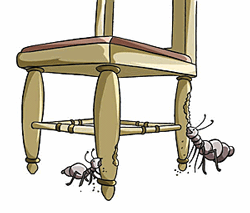xylo-, xyl- +
(Greek: wood; the first element of various scientific and technical words that refer to wood)
2. Descriptive of block books in which the illustrations are printed from woodcuts and the text added in manuscript or handwriting.
2. A printing from woodblocks as distinct from type: Xylography is the art of printing texts or illustrations, sometimes with color, from blocks of wood, as distinct from arranging pieces of metal with raised letters or characters on their upper surfaces and printing from them as in typography.
Another type of xylomancy includes the interpretation of the positions of logs and the manner of their burning in a fire.
An insect belonging to one of these groups.
2. Eating or boring into wood, as the larvae of certain insects.

Many xylophagous insects have symbiotic protozoa and/or bacteria in their digestive system which assist in the breakdown of wood cellulose.
The cellulose, or inert carbohydrate which is the chief constituent of the cell walls of plants and of wood, cotton, hemp, paper, etc. that exist in a termite's food is digested by myriads of flagellated protozoans living in the termite's digestive tract.
Without the protozoans in the termites digestive areas, the termites would starve because the cellulose could not be digested without the protozoans.
Other organisms, especially among the groups feeding on decaying wood, apparently derive much of their nutrition from the digestion of various fungi that are growing within the wood fibers.


